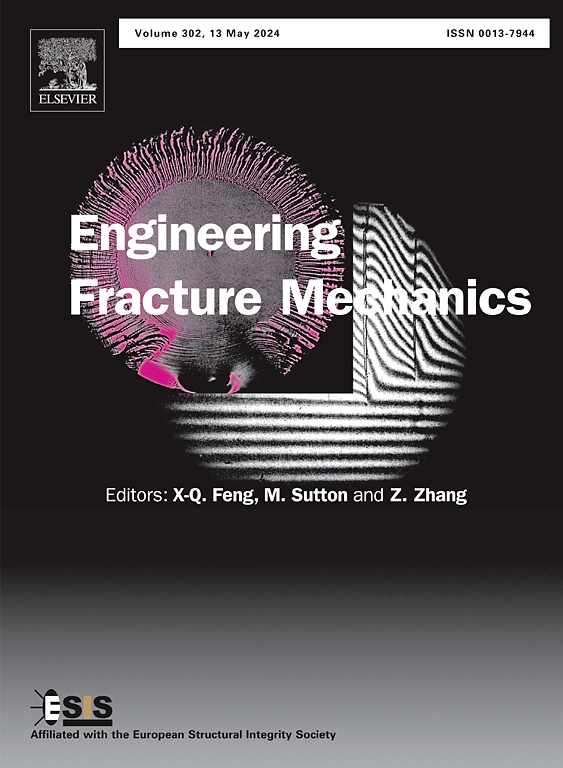Voronoi网络不规则性和聚合物浸润对3d打印骨支架应力强度因子的影响
IF 4.7
2区 工程技术
Q1 MECHANICS
引用次数: 0
摘要
开发具有增强力学性能的骨支架是提高其组织工程应用性能的关键。本研究探讨了Voronoi网络不规则性和聚合物浸润对3d打印聚乳酸(PLA)支架断裂行为的影响。采用熔融沉积建模的方法制备了不同相对密度(25%、40%和100%)和不规则度(0 ~ 1)的聚乳酸支架,并对其进行壳聚糖聚合物浸润。通过有限元分析、断裂试验和数字图像相关技术来确定混合模式(I/II)应力强度因子。结果发现,中等不均匀系数为0.5可显著提高支架的断裂韧性,较常规支架提高24.15%。相对密度为40%的支架在强度和孔隙率之间具有最佳平衡,导致KIf比密度为25%的支架高43%。研究进一步表明,裂纹长度比的增大会增大应力强度因子,而不规则度过大则会降低结构的完整性。壳聚糖的加入提高了材料的II型抗断裂能力,在不均匀度和裂纹长度比最高的情况下,KIIf达到最大。本文章由计算机程序翻译,如有差异,请以英文原文为准。
Impact of Voronoi network irregularities and polymer infiltration on the stress intensity factor of 3D-printed bone scaffolds
Developing bone scaffolds with enhanced mechanical properties is critical for improving their performance in tissue engineering applications. This study explores the effect of Voronoi network irregularities and polymer infiltration on the fracture behavior of 3D-printed polylactic acid (PLA) scaffolds. PLA scaffolds of different relative densities (25 %, 40 %, and 100 %) and irregularity factors (0 to 1) were fabricated by fused deposition modeling and infiltrated with chitosan polymer. Finite element analysis, fracture tests, and digital image correlation techniques were carried out to determine the mixed-mode (I/II) stress intensity factors. It was found that a moderate irregularity coefficient of 0.5 significantly improved fracture toughness, with an improvement of 24.15 % compared to regular scaffolds. Scaffolds with a 40 % relative density possessed the optimal balance between strength and porosity, leading to a 43 % higher than scaffolds of 25 % density. The research further illustrated that an increase in the crack length ratio escalates stress intensity factors, whereas excessive irregularities diminish structural integrity. Adding chitosan improved mode II fracture resistance, with reaching its maximum at the highest levels of irregularity and crack length ratio.
求助全文
通过发布文献求助,成功后即可免费获取论文全文。
去求助
来源期刊
CiteScore
8.70
自引率
13.00%
发文量
606
审稿时长
74 days
期刊介绍:
EFM covers a broad range of topics in fracture mechanics to be of interest and use to both researchers and practitioners. Contributions are welcome which address the fracture behavior of conventional engineering material systems as well as newly emerging material systems. Contributions on developments in the areas of mechanics and materials science strongly related to fracture mechanics are also welcome. Papers on fatigue are welcome if they treat the fatigue process using the methods of fracture mechanics.

 求助内容:
求助内容: 应助结果提醒方式:
应助结果提醒方式:


